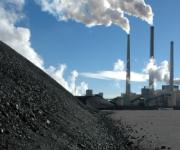Question: are there any examples of a completely free market inducing investment in mature, capital-intensive industries? I’m not sure there are. More problematically, I’m not sure that economists and policy makers appreciate this reality. The result is that we continue to create markets — from electricity to CO2 — that by design are incapable of rewarding or encouraging capital investment. In electricity markets, this has created a situation in which the wholesale prices are insufficient to encourage new investment and — if left unchecked — could lead to serious power supply shortfalls. In CO2 markets, this has the potential to create a situation wherein the one thing we most want from CO2 policy — namely, capital investments to reduce CO2 — is not achieved.
First, let me define my terms. By “free market”, I’m referring to the market of Econ 101 textbooks: no barriers to entry, no barriers to exit, no one entity can independently affect price, etc. By “mature”, I refer to industries wherein the next investment is unlikely to produce a product with a significantly lower cost structure than the industry average. Finally, by “capital-intensive”, I refer to any industry where the majority of the annual cost goes to capital recovery.
Economists have spent a lot of time figuring out how to structure markets to get as close as possible to that free market ideal. Much of the most interesting work in that vein has been in the design of auctions, especially in the electric sector. A host of models have emerged that seek to drive costs down the marginal cost of the highest-cost supplier necessary to meet supply needs. For the most part, these auctions have been successful. Yes, there are some high-profile screw-ups (see: Enron), but they are the exceptions that prove the rule — the absence of front-page stories on 99.99 percent of the world’s auctions is a testament to their effectiveness.
But here’s the rub: no one invests capital to cover their operating costs. We invest capital to earn profits in excess of our operating costs. And there are no profits if you’re only covering your marginal production cost. Robert Solow won a Nobel prize for noticing that the presence of profits (and its result: economic growth) is de facto proof of the absence of free markets. Solow’s conclusion was that the persistence of economic growth must therefore result from technological innovation. So long as opportunities exist for technological advance that allow one to produce widgets at a discount to the market clearing price, companies will make those investments, capture profits and reinvest in further growth.
But what happens when those opportunities don’t exist anymore? When’s the last time someone built a new integrated steel mill in response to a free-market price signal? Oil refinery? Cement plant? Might the deindustrialization of the United States result in part from an economic model that drove prices for manufactured goods down to their marginal cost once those industries reached maturity?
Moreover, as we look for places where we have invested in large capital projects in mature industries, a consistent feature emerges of heavy subsidization and distortion of free market principles. China has invested in basic infrastructure by government mandate. Regulated utilities build power plants on the back of rate-payer guarantees and monopoly franchises. Wind turbines have been built in response to technology-specific tax incentives and RPS mandates.
This becomes problematic when we look at what we are currently expecting markets to do. We have designed electric capacity markets to clear at the marginal cost of capacity services, but expect them to bring new investment forward. Greenhouse gas cap & trade markets will fail utterly if they fail to incentivize investments in CO2 reduction…but they too are being set up within the framework of auctions and marginal clearing prices. Market purists fall back on just-so stories when confronted with these failures, noting that the lack of investment in response to these markets suggests nothing more than that the investment wasn’t needed. Maybe they’re right. But if they’re wrong, we’re in dangerous waters — and since the economic theory upon which these markets are based is supposed to drive price down to the margin, why should we expect it to induce new investment?
This isn’t to suggest that we all turn socialist, but simply that we acknowledge the limitations of the tool. Markets structured to drive costs down to the margin are great at rationalizing production and forcing discipline on business managers. But asking them to also encourage new investment may be like trying to catch a deer with a fishing pole. In cases where new investment is needed — as is most obviously the case with any effective GHG regulation — we may need more tools.
This post first appeared on REDBlog.


